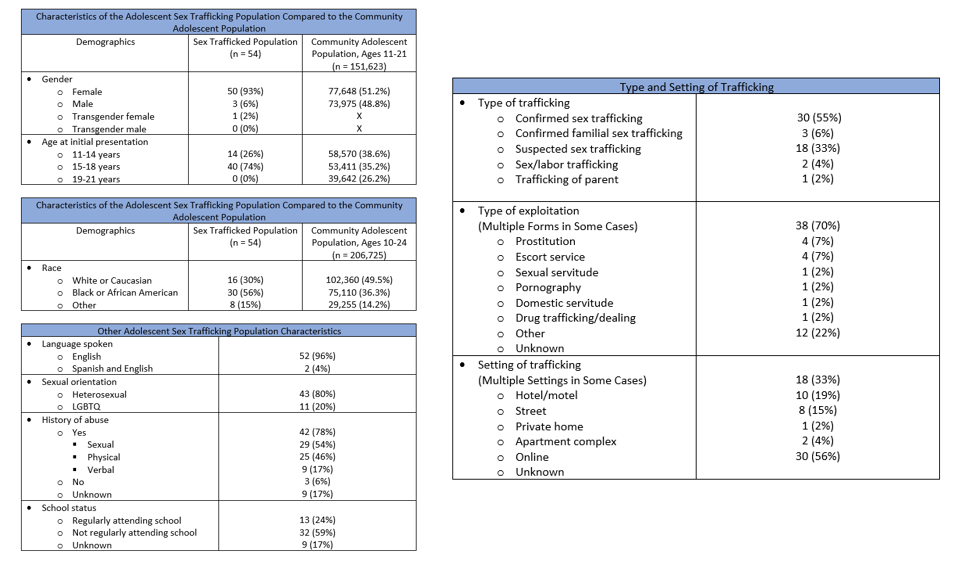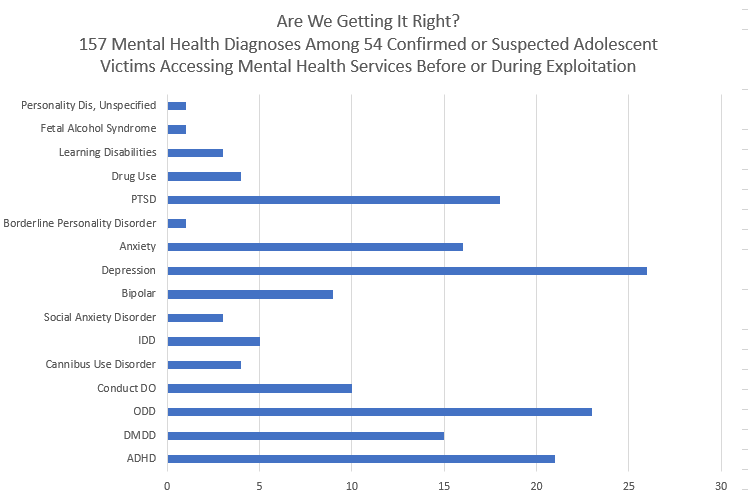Child Abuse & Neglect
Child Abuse & Neglect 1
597 - Healthcare Utilization by Pediatric Human Trafficking Victims in an Urban Healthcare System
Publication Number: 597.103
- LE
Lauren Ehrhardt-Humbert, MS (she/her/hers)
Medical Student
Wake Forest School of Medicine of Wake Forest Baptist Medical Center
Charlotte, North Carolina, United States
Presenting Author(s)
Background:
Human trafficking is a public health crisis. Trends in healthcare utilization inform policies and processes for adolescent victims.
Objective: This study aimed to assess healthcare utilization by presenting diagnoses.
Design/Methods:
This is a retrospective, cross-sectional study of patients ages 11-21 evaluated for human trafficking (HT) at an urban tertiary children’s hospital between 2019 and 2022 using evidence-based tools (West Coast CSE-IT, Modified TVIT). Data was extracted using standardized methods. Demographic data was collected. Primary care (PCP) visits were stratified within 1 months, 6 months or 2 years of identified HT. Emergency department (ED) utilization and indications for admission were analyzed to capture the wide-ranging resources required for treatment. Confirmed victims admitted for unsafe disposition were stratified based on high recidivism ( >120 hospital days) to examine treatment barriers. Analyses used proportions and confidence intervals.
Results:
Among 54 confirmed or suspected cases of sex trafficking, there were 147 admissions, 171 ED visits, and 24 PCP visits. The median age was 16 years and 54% were black. Exploitation included confirmed sex trafficking 55.6% (95% CI 41-69%), confirmed familial sex trafficking 5.6% (95% CI 1-15%), sex/labor trafficking 3.7% (95% CI 0.4-13%), trafficking of parent 1.9% (95% CI 0.0 to10%), and suspected trafficking 33.3% (95% CI 8-29%). Admissions totaled 3,441 days. A PCP evaluated 4 victims within 30 d of identification (7%; 95% CI 2-18%), 17 victims within 6 m (31%; 95% CI 19-45%), and 24 victims within 2 y (43%; 95% CI 30-58%). Unsafe disposition after elopement accounted for 41% (95% CI 33-50%) of admissions and 67% (95% CI 65-68%) of days. The high recidivism group,10 patients, accounted for 64% (95% CI 62-66%) of days. Barriers to sustained recovery in the high recidivism group included low parent engagement, exclusions from treatment for aggression, lack of options for complex trauma and intellectual disabilities, and lack of educational funds for out of state programs. The 54 victims accessed mental health services before and during exploitation and were diagnosed with 157 different mental health disorders.
Conclusion(s):
Human trafficking victims have complex needs requiring diverse accessibility to healthcare. Treatment barriers leading to recidivism drove inpatient days. These data suggest partnerships with primary care and mental health clinicians may improve identification and refine diagnosis and treatment. These utilization trends may inform interventions and policy change to improve outcomes for vulnerable youth.


